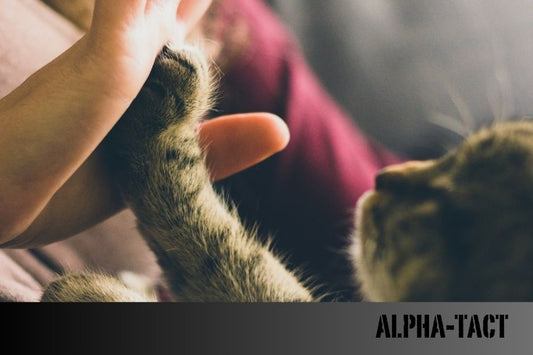
Lung and Respiratory Diseases in Cats: Symptoms and Treatment Methods
Share
Causes of Respiratory System Diseases in Cats
Respiratory diseases in cats can be caused by many factors:
-
Infections: Upper respiratory tract infections (URTIs) can be viral or bacterial in origin. Feline Herpes Virus (FHV) and Feline Calicivirus (FCV) are common causes.
-
Allergies: Allergens such as pollen, dust mites, or cigarette smoke can irritate the respiratory tract.
-
Asthma: Asthma in cats can narrow the bronchi, making breathing difficult.
-
Tumors: The presence of tumors in the lungs or nasal area can lead to breathing problems.
-
Traumas: Blows to the chest area can cause lung damage.
-
Parasites: Parasites such as lungworms can cause infections in cats' respiratory tracts.
Symptoms of Respiratory Diseases in Cats
If you notice the following symptoms in your cat, you should contact a veterinarian immediately:
-
Difficulty Breathing: Rapid, shallow or labored breathing.
-
Sneezing and Coughing: Chronic sneezing or productive cough.
-
Runny Nose: Coloured or bloody discharge.
-
Growling and Purring: Annoying sounds during breathing.
-
Lethargy: Loss of energy and inactivity.
-
Blue or Pale Tongues: Sign of lack of oxygen.
Diagnostic Methods for Respiratory Diseases in Cats
Your veterinarian may use several methods to diagnose your cat's respiratory disease:
-
Physical Examination: Listening to your cat's breathing and examining the chest area.
-
Radiography (X-ray): It is used to see abnormalities in the lungs.
-
Blood Tests: Detects signs of infection or inflammation.
-
Endoscopy: Detailed examination of the respiratory tract.
-
Sputum or Nasal Smear Analysis: Determine the source of infection.
Treatment Methods for Respiratory System Diseases in Cats
Treatment varies depending on the cause and severity of the disease:
-
Antibiotics: It is used in bacterial infections.
-
Antiviral Drugs: It is given to control viral infections.
-
Bronchodilators: It is used to widen the airways in conditions such as asthma.
-
Allergy Treatment: Avoiding allergens and antihistamines.
-
Surgical intervention: It can be applied for tumors or serious trauma.
-
Parasite Treatment: Appropriate medications for parasitic infections.
Preventing Respiratory Problems in Cats
-
Regular Vaccination: Provides protection from viruses such as FHV and FCV.
-
A Clean Environment: Create an environment where dust and smoke are kept to a minimum.
-
Regular Veterinary Check-ups: Do not delay veterinary visits for early diagnosis and treatment.
-
Healthy Nutrition: Strengthen your cat's immune system.
Conclusion
Respiratory diseases in cats are serious, but can often be controlled with early diagnosis and appropriate treatment. In order for your cat to live a healthy and happy life, you should pay attention to respiratory problems and take the necessary precautions. If you observe any problems, consult your veterinarian without delay.











